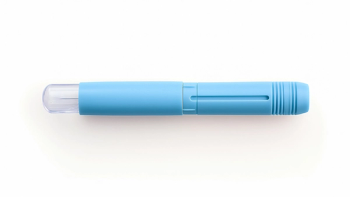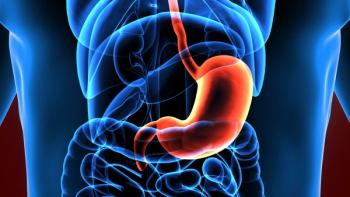
Why Dried Blood Spot Testing Will (Eventually) Make Its Way to the Clinic
As Dried Blood Spot (DBS) continually climbs over sensitivity and collection hurdles, its emergence from the narrow application of screening to the vastly wider world of preclinical testing begs the obvious question: When will it reach the clinic?
The short answer is eventually. With so much activity surrounding DBS, it is perhaps easy to think that a standardized clinical application is around the corner. Yet, how quickly DBS emerges in the clinic depends on when the application of DBS in preclinical efficacy becomes routine. That will be a matter of flexibility, speed, and entrepreneurism – all of which are progressing.
Aided by the increasing sensitivity from advanced mass spectrometry (MS), preclinical researchers have developed new assays and devised alternative ways to perform tests on tiny volumes of blood and body fluids that further validate and expand DBS’ use. Numerous poof of concept studies conducted over the last several years have shown DBS capable of delivering, among other things, reliable applications in generating comparable results across laboratories; expanded use in toxicology; large molecule applications; and new strategies to heighten LC-MS/MS sensitivities.
Bioanalytical standards come first
Even with these advancements, DBS is not yet ready for clinical primetime, as there are still critical areas of development. For example, size is DBS’ double-edge sword. While the small sample delivers many advantages, compared with a normal plasma assay, it provides 25- to 100-fold less volume per sample for bioanalysis.
The same goes for assay dynamic range. With limitations made by sample dilution and detection techniques, enhancing assay sensitivity becomes critical, and some analytes may be out of reach without referring to traditional plasma. Bioanalysts need to have a wide selection of techniques to improve sensitivity by five- to 20-fold for low-dosing clinical studies and assays with metabolites. Moreover, DBS can also be more time-consuming and complex to develop, as the method requires the latest analytical technology and additional characterizations, such as spotting volume, punching locations, and hematocrit effects.
As with anything involving drug development, DBS requires regulators’ stamp of approval. None has issued definitive rulings on how they will handle new drug applications that use the technique. A long list of validation standards and extensive international guidance exist for liquid matrices, but they do not apply to DBS interchangeably.
Offsite collection
Expanding into clinical populations is an unending challenge. To see the possible future of DBS in the clinic, look to Spot on Sciences. The start-up is working on a new way of collecting and preserving blood samples to market. The Austin, Texas-based company’s first product, HemaSpot, offers remote blood collection by finger stick and sample shipment by mail. The product enables home sampling, making it ideal for populations with limited access to the clinic, such as the elderly, the military, and home healthcare workers. Facilitated sample collection from these populations could be a boon to clinical trials.
Optimization for the clinic
What preclinical advancements and validation studies will eventually produce is standardization of DBS in the execution and recovery of sample collection. With it will come the demand for speed, ease and uniformity in the clinic.
Applying or spotting a biological matrix on to a DBS card stipulates precision and patience. A number of microsampling techniques can be used to collect and transfer samples, but most require significant user effort and do not produce multiple spots. That could change with a new microcapillary dispenser currently undergoing testing from Drummond Scientific. It’s prototype microsampling dispenser offers a capability for blood collection, plasma separation, and quantitative dried plasma spot (DPS) production, all from within a single microhematocrit capillary tube. This could make DBS collection easier, more efficient and safer.
As goes the applier, so goes the medium. DBS paper is the other part of the quicker, better, and greater accuracy equation. With that goes the question of yield. How much sample can you get from a single drop?
Perforated dried blood spots (PDBS) for accurate microsampling addresses previous challenges. PDBS discs are prepared from regular filter paper, with a diameter of 6.35 mm and a thickness of 0.83 mm. An accurate amount of blood sample (5-10 µl) is deposited, dried and stored on the PDBS discs. Upon sample analysis, the entirety of the PDBS samples is simply pushed by single-use pipette tips into 96-well plates.
PDBS has proved to be a viable alternative to conventional DBS, offering additional advantages of complete sample utilization, no requirement for punching, ease of recovery assessments, and elimination of sampling influence due to HCT levels.
Clinical application of DBS is not a question of if. Just how quickly depends on when still-evolving preclinical efficacy becomes routine to have DBS emerge as a standardized clinical tool.
Sources
- “Application of the DBS Methodology to a toxicokinetic study in Rats and Transferability of Analysis Between Bioanalytical Laboratories,” Bioanalysis, 2010.
- “Toxicokinetic Evaluation of Dried Blood Spot (DBS) Methodology versus Traditional Whole Blood Methodology in Rats Given a Single Oral Gavage Dose of Acetaminophen”, Covance, 2009.
- “Quantitative Determination of the Therapeutic Peptide Ramoplanin in Dried Blood Spots by LC-MS/MS”, Covance, 2010.
- “Hot on the Trail of Dried Blood Spots”, Drug Discovery & Development, June 1, 2011.
- “Perforated Dried Blood Spots: A Novel Format for Accurate Microsampling”, Bioanalysis, 2011.
- “Evaluation of a Novel Microdispensing Technique for Quantitative Dried Plasma Spots (DPS)”, scientific Poster by Drummond Scientific, presented AAPS National, 2011.
- “Spot on Sciences Ready to Move Beyond Startup Mode”, Austin Business Journal, September 26, 2011
Fumin Li, PhD, is Senior Scientist,
Newsletter
Stay current in clinical research with Applied Clinical Trials, providing expert insights, regulatory updates, and practical strategies for successful clinical trial design and execution.






.png)



.png)



.png)
.png)
